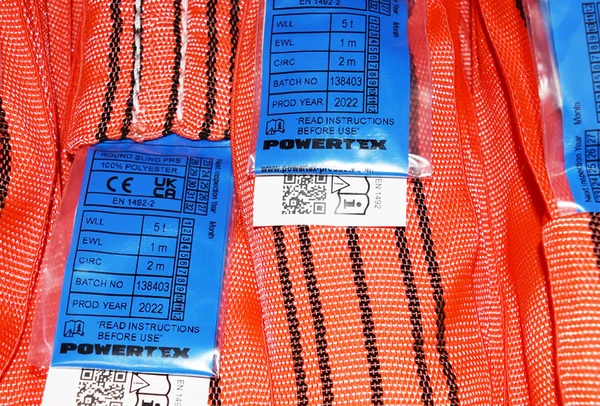Effective Working Length

If you work with lifting equipment, you’ve likely encountered the abbreviation EWL on labels, in user manuals, or in product descriptions. But do you know what it actually means?
Understanding EWL
|
EWL stands for Effective Working Length, a crucial term in lifting operations. It typically refers to the portion of the lifting equipment—such as cranes, slings, hooks, or other tools—that is directly engaged with the object being lifted. This is the part of the equipment that bears the load during the lifting operation. Understanding the EWL is vital for ensuring that the lifting equipment and cranes are properly rated for the task at hand. If the EWL is inadequate for the load, it can result in overloading, equipment failure, or even serious accidents. For a round sling, the EWL is measured as the internal length when the sling is laid flat and fully extended by hand. |
 |
Using EWL Correctly in Lifting Operations
To ensure safe and effective lifting operations, it's essential to use the Effective Working Length (EWL) properly. Here’s how:
- Identify the Correct EWL: Understand the different components and lengths of your lifting equipment and how they combine to determine the overall EWL.
- Calculate the Load: Accurately assess the weight of the load to be lifted, as this will influence the selection of the appropriate lifting equipment and its EWL.
- Choose the Right Equipment: Based on the load and required EWL, select the lifting equipment that can safely and efficiently handle the operation.
- Monitor and Maintain: During the lifting operation, continuously monitor the equipment to ensure it is functioning correctly. Regular inspections and maintenance are also crucial for maintaining equipment performance and safety.
In summary, EWL refers to the actual working length of the lifting equipment and is essential for ensuring the safe and efficient handling of heavy or large objects by selecting the right equipment and avoiding overloading.
Do you wish to know more about our Lifting KnowHow? Please reach out.
For faster response, call us directly at +47 66 79 95 00!
Meanings of WLL, SWL and MBLLearn about the different meanings surrounding WLL, SWL and MBL. |
Learn more |
What does EWL mean?Learn about Effective Work Length. |
Learn more |
What is r-PET?Learn about products made of recycled plastic. |
Learn more |
What is RFID?Learn about RFID and what it's used for. |
Learn more |
What is Steel Grades?Learn about the different steel grades for lifting equipment. |
Learn more |
Why CE and UKCA marking?Learn about the usage of CE and UKCA markings. |
Learn more |


